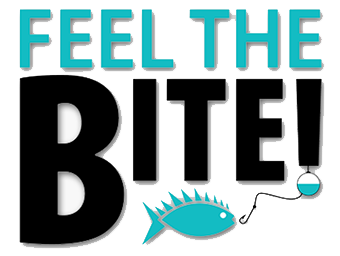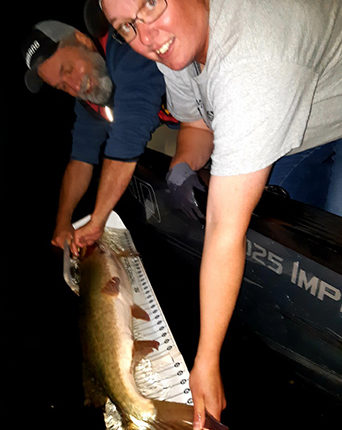Warm Water Muskie
By Lawrence Gunther
Judging by the steady drop in the largemouth bass population along the Ottawa River below Ottawa, it’s safe-to-say that the Muskie population is thriving. This, in spite of increasing fishing pressure. No doubt, careful Muskie handling practices have a lot to do with the sustainability of muskie on the river. For this we can thank the on-going research by scientists at Carleton University, the advocacy work of the Ottawa chapter of Muskie Canada, and provincial regulations that limit the harvest of only extreme trophy fish measuring 54 inches or more.
The 2021 summer was another long-hot one on the Ottawa River with surface water temperatures above 27 degrees C. (80 degrees F.) for much of July and August. Thankfully, anglers and guides alike adopted even more stringent measures to ensure Muskie being caught and released went back healthy.
The Chair of the Ottawa Muskie chapter of Muskie Canada, Chris Purdy, is well aware of what it could mean to a Muskie to lift it out of the water when water temperatures are high. Chris cautioned Chapter members that catch reports need not include a picture of fish caught to avoid fish being lifted out of the water. He suggests fish be measured in the water using either a floating bump board or soft cloth tape while the fish rests in the net with its head in the water. According to Dr. Sean Landsman from Carleton University, fish caught in warmer water temperatures have a strong likelihood of a positive post-release outcome if fish stay IN the water during the hook removal, measuring and photograph stages of a release. Turns out people were listening.
I was invited to join Ottawa River Musky Factory guides Lisa Goodier and Mike Kadoura for a day in early September 2021 to do some deep-water Muskie fishing. The day started with our plumbing the depths jigging Bondie Baits, followed by deep trolling – all of which took place in deeper cooler water that averaged 20-feet deep. It was only after the sun had set that we did some casting around the mouths of bays in water that was 10 to 15 feet in depth.
It was on our last cast of the day that Lisa hooked into this 42-inch Muskie using an orange and black Musky Factory in-line Bait. She had just told us her theory that Muskie caught in low, or no light often take three turns of the bait boat-side before striking for real. Sure enough, the fish followed the spinner right up to the side of the boat, and it was on the third circle that the Muskie struck for real. Mike was ready with the net, subduing the fish within a minute.
Lisa used a 20-inch hook extractor available through Muskie Factory Baits to quickly remove the hook while the fish rested in the net with its head in the water. From there, we slid the fish into Lisa’s floating bump-board for a quick measurement and photograph. Upon release, the Muskie swam back into the depths with several powerful swipes of its massive tail. Not once did the fish come over the gunnel.
Throughout North America prize apex predator sport fish are increasingly being safeguarded under rules that prohibit their being lifted out of the water, such as in the case of large sturgeon caught on the Fraser River, or brought over the gunnel, such as with Florida Tarpon.
This past summer Trout Unlimited did not post a single photo of fish being held by anglers, choosing instead to display only those fish pics of fish in the water. Tackle companies such as Shimano have instructed their brand ambassadors to reframe from posting any “grip-and-grin” pics on their social media pages. If this is where things are going, might as well get a head-start now by adopting the practice. Or, face taking down fish pics that might someday no longer be considered proper fish stewardship. Trust me, even if you can prove the pic was taken well before any new fish handling rules took effect, it’s not worth the effort to deflect this sort of on-line criticism.
Science is continuously teaching us new best practices when handling fish. It means learning, or unlearning things that once seemed benign. You’re better off to keep abreast with the science and the new norms and rules that come next. It’s essential if angling is to continue to stay relevant.
To become a better-informed angler and embrace the sport of fishing in ways that will allow you to hold your head high knowing that you’re also serving as a steward of the environment, check out the free resources made available through the charity Blue Fish Canada. All the information and training materials we distribute are fact-checked by our expert scientists and angler advisors. Or, if your involved in the fishing tourism sector and you want to make sure your services are based on the latest science-based sustainable best practices, Blue Fish Canada has training and certification resources for this as well. Learn more at: www.BlueFishCanada.ca.
Sign up for the biweekly Blue Fish Canada News and keep up to date on the latest fishing, fish health, water quality, indigenous and industry news: http://eepurl.com/cgNxab
The Blue Fish Radio Show is a podcast featuring amazing people working hard to conserve Canada’s recreational fisheries. Download and rank us on Apple Podcast: https://podcasts.apple.com/us/podcast/the-blue-fish-radio-show/id1090189487
Visit The Blue Fish Canada YouTube channel at: https://www.youtube.com/channel/UChyOTm97FTAlvx2Wp8DRgSA


